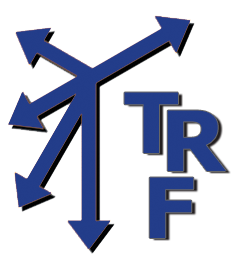Summer 2013 (Vol. 52, No. 2)
Future Substitutes for Diesel Fuel in U.S.Truck and Railroad Freight Transportation Abstract This paper explains why diesel fuel is the preferred fuel in freight transportation. It identifies possible substitute fuels for motor carriers and railroads that are currently available and under development. It identifies which of these substitutes are likely to be used in the near and […]
Summer 2013 (Vol. 52, No. 2)
A Framework for Determining Highway Truck-Freight Benefits and Economic Impacts Abstract This paper proposes a method for calculating both the direct freight benefits and the larger economic impacts of transportation projects. The identified direct freight benefits included in the methodology are travel time savings, operating cost savings, and environmental impacts. These are estimated using regional travel demand models […]
Summer 2013 (Vol. 52, No. 2)
U.S. and European Freight Railways: The Differences That Matter Abstract This paper examines the differences between the United States (U.S.) and European (EU27) freight railways. The inherent or structural factors influencing the railways modal share will be evaluated. It was found that nearly all of the disparity in modal share can be explained by structural or inherent differences, […]
Summer 2013 (Vol. 52, No. 2)
Rail Market Share of Grain and Oilseed Transportation Abstract The share of the grain and oilseed harvest moved by rail has been declining since 1980, when the Federal Motor Carrier Act and the Staggers Rail Act were passed. Large structural changes associated with these acts affected the decline over the following two decades. Yet, even though the large […]
Summer 2013 (Vol. 52, No. 2)
Introduction of Heavy Axle Loads by the North American Rail Industry Abstract The Association of American Railroads (AAR) initiated the Heavy Axle Load (HAL) Research Program in 1988 in order to “provide guidance to the North American railroad industry about whether to increase axle loads and to determine the most economic payload consistent with safety” (Kalay and Martland […]
Summer 2013 (Vol. 52, No. 2)
Modeling User Equilibrium in Microscopic Transportation Simulation Abstract This paper compared performance of methods for combining model information estimated in one region and applied to another region to improve estimation results. The application is for models developed to estimate household-level automobile-specific CO2 emissions. The results indicated that automobile-specific CO2 emissions models can be transferred from one geographical region to […]
Summer 2013 (Vol. 52, No. 2)
Spatial Transferability: Analysis of the Regional Automobile-Specific Household-Level Carbon Dioxide (CO2) Emissions Models Abstract This paper compared performance of methods for combining model information estimated in one region and applied to another region to improve estimation results. The application is for models developed to estimate household-level automobile-specific CO2 emissions. The results indicated that automobile-specific CO2 emissions models can […]
Spring 2013 (Vol. 52, No. 1)
Gate Violations by Truck Drivers at Highway-Rail Grade Crossings in Two Cities Abstract Gate violations during train crossing events by truck drivers at highway-rail grade crossings in two cities were investigated. About 22% of the collected observations involved gate violations by truck drivers. Analysis showed that the frequencies of gate violations increased with higher truck traffic during crossing […]
Spring 2013 (Vol. 52, No. 1)
Correlation Analysis of Duty Cycle Effects on Exhaust Emissions and Fuel Economy Abstract Correlation analysis was performed to investigate the effects of drive cycle characteristics on distance-specific emissions (g/mile) and fuel economy (mpg) and consequently determine the most influential cycle metrics for modeling. A detailed analysis of linear and non-linear correlations was performed among cycle metrics to avoid […]
Spring 2013 (Vol. 52, No. 1)
Truck Use on Texas Toll Roads Abstract Metropolitan toll roads are a popular source of non-traditional funded highway investment, targeting automobile users. Toll rates have been traditionally derived from traffic and revenue (T&R) studies, which appear unable to accurately estimate truck demand even when a toll road offers an alternative route segment to interstate trucking. This paper examines […]

